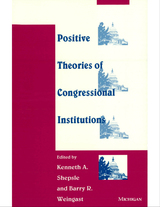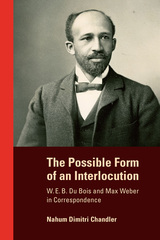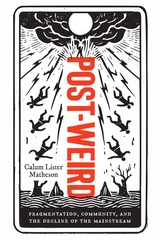
Richard Caves analyzes the market structure, conduct, and performance of the United States domestic passenger airlines. A unique aspect of the industry is the close regulation of its daily business functioning by the Civil Aeronautics Board. Although this influence affects every managerial decision, Caves finds that the economic elements in the industry's market structure still play a vital role in determining performance and conduct. He shows that the airline industry has structural characteristics that would ensure market performance of reasonable quality with less extensive economic regulation.
His book is more than a comprehensive evaluation of the air-transport industry; it is concerned with the basic question of governmental control. Questions of regulation, already materially affecting the American economy, are often before the public. Such industry studies as this clarify the net effect on the general economic welfare of industrial controls—how they work, where they work best, and the advantages of increasing or decreasing them.


Between 1951 and 1962 nearly ten billion dollars in long-term capital (both direct investment and purchase of securities) flowed into Canada. This massive amount represented one third of all long-term capital moving among industrial nations. Its transfer marked the first time since before World War I that the world witnessed such a large-scale international movement of capital motivated primarily by a prospect of higher rates of return.
In Capital Transfers and Economic Policy the authors test the theory of the causes and effects of international capital movements against the evidence drawn from Canada's experience. They explore Canada's adjustment to capital flows and show how the operation of her economic policy is affected by the sensitivity of capital flows to the country's interest rates and foreign-exchange rate.
Their brilliant analysis is particularly valuable in light of current trends in capital flows among industrial nations and the June 1970 return of the Canadian dollar to a flexible exchange rate, which put the economy in a working situation similar to that of the fifties.

With the nations of the world becoming more interdependent, it is imperative to take international influences into account in understanding the organization of industry within a country. This book extends the structure/conduct/performance framework of analysis to present a fully specified simultaneous equation model of an open economy—Canada.
By estimating a system of equations of all the major variables, the authors can identify which variables are dependent and which are independent. They are thus able to assess the relative importance of such factors as seller concentration, import competition, retailing structure, advertising expenditure, research and development spending, and technical and allocative efficiency in shaping the organization of industry in Canada. In addition, using both industry-level and firm-level data, the authors develop methods for assessing the effect of structural variables on diversification strategies and the consequences for market performance. They also study the effects of such variables on firms’ access to capital markets. The book concludes with a discussion of the implications of the findings for government policy.

This book explores the organization of creative industries, including the visual and performing arts, movies, theater, sound recordings, and book publishing. In each, artistic inputs are combined with other, "humdrum" inputs. But the deals that bring these inputs together are inherently problematic: artists have strong views; the muse whispers erratically; and consumer approval remains highly uncertain until all costs have been incurred.
To assemble, distribute, and store creative products, business firms are organized, some employing creative personnel on long-term contracts, others dealing with them as outside contractors; agents emerge as intermediaries, negotiating contracts and matching creative talents with employers. Firms in creative industries are either small-scale pickers that concentrate on the selection and development of new creative talents or large-scale promoters that undertake the packaging and widespread distribution of established creative goods. In some activities, such as the performing arts, creative ventures facing high fixed costs turn to nonprofit firms.
To explain the logic of these arrangements, the author draws on the analytical resources of industrial economics and the theory of contracts. He addresses the winner-take-all character of many creative activities that brings wealth and renown to some artists while dooming others to frustration; why the "option" form of contract is so prevalent; and why even savvy producers get sucked into making "ten-ton turkeys," such as Heaven's Gate. However different their superficial organization and aesthetic properties, whether high or low in cultural ranking, creative industries share the same underlying organizational logic.

Media critics invariably disparage the quality of programming produced by the U.S. television industry. But why the industry produces what it does is a question largely unasked. It is this question, at the crux of American popular culture, that Switching Channels explores.
In the past twenty-five years, the expansion of cable and satellite systems has transformed television. Richard Caves examines the economics of this phenomenon--and the nature and logic of the broadcast networks' response to the incursion of cable TV, especially the shift to inexpensive unscripted game and "reality" shows and "news" magazines. An explanation of these changes, Caves argues, requires an understanding of two very different sectors: the "creative industry," which produces programs; and the commercial channels, which bring them to viewers. His book shows how distributors' judgment of profitability determines the quality and character of the programs the creative industry produces. This determination, writes Caves, depends on the number and types of viewers that various programs can attract and advertisers' willingness to pay for their attention, as well as the organization of the networks that package programs, the distributors that transmit them, and the deals these parties strike with one another.

READERS
Browse our collection.
PUBLISHERS
See BiblioVault's publisher services.
STUDENT SERVICES
Files for college accessibility offices.
UChicago Accessibility Resources
home | accessibility | search | about | contact us
BiblioVault ® 2001 - 2025
The University of Chicago Press









